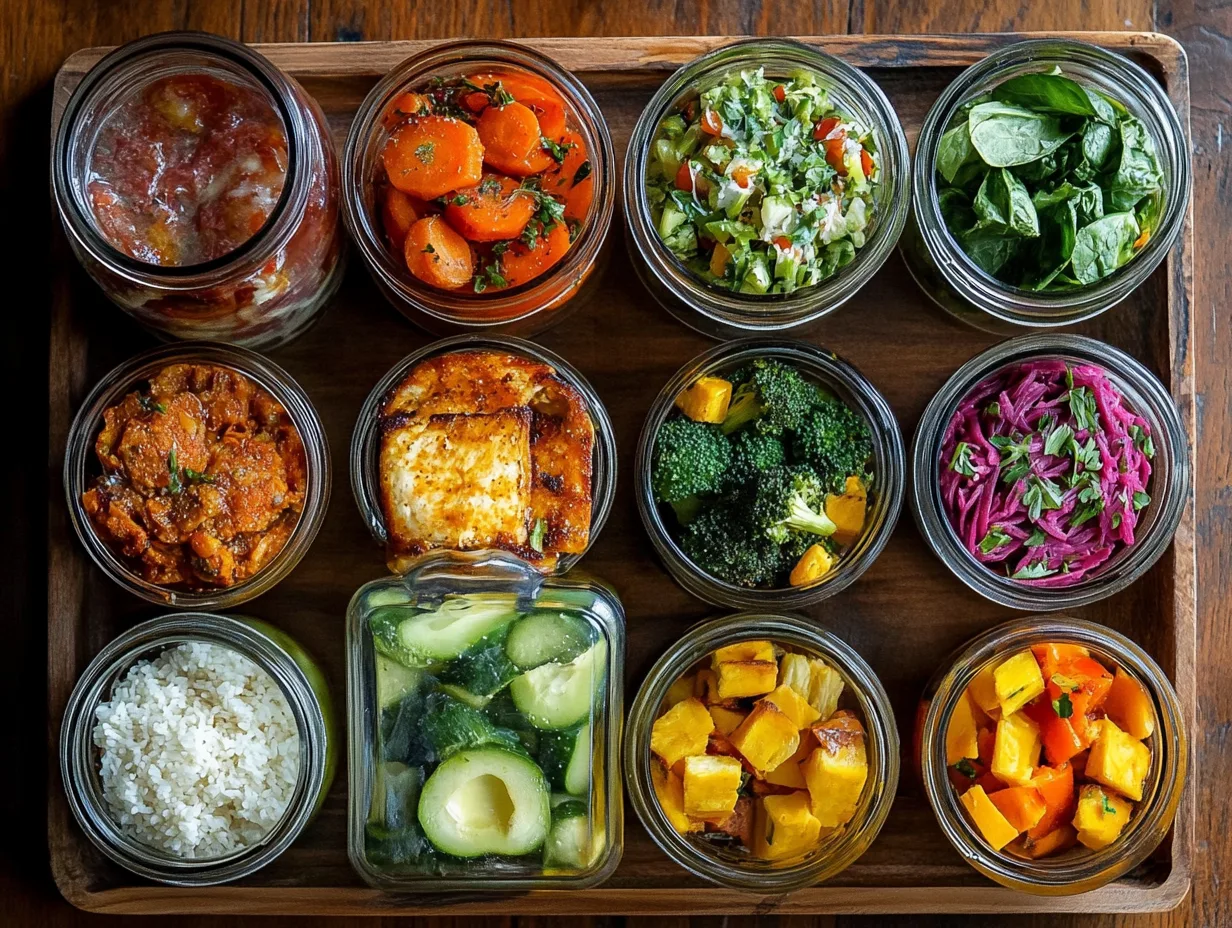Keep It Interesting to Avoid Plateaus
Bariatric Menu Rotations are critical to maintaining variety, preventing dietary boredom, and ensuring steady progress after weight loss surgery. Monotonous eating can stall weight loss, reduce nutrient diversity, and dampen your enthusiasm for post-surgery guidelines. By strategically rotating foods, flavors, and cooking methods, you’ll not only sustain motivation but also support your body’s changing nutritional needs. This thorough guide delves into why varied menus matter, how to implement them, and what practical steps you can take to avoid stagnation and boost long-term success.
Why Bariatric Menu Rotations Are Essential
Overcoming Stagnation with Bariatric Menu Rotations
When you rely on a limited set of meals, your body may adapt quickly. According to the American Society for Metabolic and Bariatric Surgery, introducing variety encourages:
- Better Nutritional Coverage: Each protein source and vegetable offers unique vitamins, minerals, and amino acids, reducing gaps in your post-surgery diet.
- Ongoing Excitement: New tastes and textures keep you psychologically invested, limiting cravings for less healthy foods.
- Sustained Weight Management: Balanced rotations help avoid metabolic plateaus by challenging your body in positive ways.
Combatting Dietary Monotony
Eating the same meals repeatedly can undermine your progress by:
- Reducing Compliance: Bland or predictable dishes make you more susceptible to high-calorie indulgences.
- Potential Nutrient Shortfalls: Over-reliance on certain foods may neglect essential micronutrients found in other sources.
- Plateau Formation: A static diet can lead to fewer metabolic adjustments, slowing your rate of weight loss.
Bariatric Menu Rotations prevent these pitfalls, protecting both your motivation and your body’s nutritional requirements.
Analyzing Post-Surgery Dietary Hurdles
Decreased Appetite and Limited Capacity
Post-bariatric patients experience drastically reduced stomach volume. While smaller meals promote weight loss, they also complicate achieving nutritional goals:
- Protein Prioritization: Protein is vital for tissue repair, yet small stomach sizes can hinder adequate intake.
- Selective Eating: Some foods may trigger discomfort or dumping syndrome, reducing your overall food variety.
- Nutrient Shortfalls: Fewer total calories can exacerbate deficiencies, especially if you rely on a narrow range of dishes.
Food Aversions and Texture Issues
Certain proteins or fibrous vegetables may no longer sit well, leading to a narrower set of “safe” meals:
- Gradual Reintroduction: Retesting previously troublesome foods can expand dietary variety if tolerance improves.
- Preparation Methods: Pureeing vegetables or slow-cooking lean meats can ease digestion and maintain nutrient density.
Ensuring you diversify your plate is key to meeting nutritional recommendations. Books like the Gastric Sleeve Cookbook or the Gastric Bypass Cookbook can guide you with specialized recipes to help navigate these challenges.
Building Successful Bariatric Menu Rotations
Step 1: Establish Core Foods
Identify staple items that fit your protein, nutrient, and portion needs:
- Lean Proteins: Chicken breast, fish, turkey, tofu, or low-fat dairy.
- Complex Carbohydrates: Brown rice, quinoa, oats, beans, and legumes.
- Vegetables and Fruits: Zucchini, spinach, bell peppers, berries, apples, etc.
- Healthy Fats: Avocado, olive oil, seeds, and nuts.
Stocking these core items ensures you can quickly pivot to new meals by altering seasonings, cooking styles, or side dishes.
Step 2: Plan Weekly Rotations
Prevent monotony by distributing different protein sources, vegetables, and cooking approaches across the week:
- Protein Cycling: Assign specific days to fish, poultry, beans, or tofu.
- Cooking Variety: Roast on Monday, air-fry on Wednesday, grill on Friday.
- Flavor Themes: Mexican spice blends one night, Italian herbs the next, and Asian sauces another.
Charting these rotations on a weekly or biweekly basis can maintain consistency while keeping your palate excited.
Step 3: Mix and Match Textures
Post-surgery, texture preferences may shift, so combining different consistencies can improve satiety:
- Soft Proteins: Ground turkey, scrambled eggs, or shredded chicken if you prefer a gentler mouthfeel.
- Crunchy Toppings: Toss toasted seeds or a small amount of low-fat cheese over softer dishes for texture contrast.
- Blended Sauces: Pureed vegetable-based sauces can add creaminess and extra nutrients, perfect for fish or poultry.
Flavorful Strategies for Rotating Meals
Using Herbs, Spices, and Marinades
Injecting variety doesn’t require complex recipes—often, herbs and spices do the trick:
- Fresh Herbs: Basil, cilantro, rosemary, thyme infuse brightness and aroma.
- Dried Spice Blends: Italian seasoning, Cajun, curry powder, or taco seasoning.
- Low-Sodium Marinades: Mix vinegar, citrus juice, garlic, and herbs for unique flavors.
For air-fryer fans, the Bariatric Air Fryer Cookbook offers multiple seasoning blends tailored to post-bariatric nutritional guidelines.
Pairing Meal Components Thoughtfully
Think of each meal as a balancing act of protein, fiber, and a touch of healthy fats:
- Base Protein: Chicken breast or salmon fillet.
- Veggie Variation: Switch between steamed broccoli, zucchini noodles, or roasted peppers.
- Whole Grains: Alternate brown rice, quinoa, or barley for slow-release carbs.
Swapping any single element can drastically change the entire meal’s flavor profile while keeping macros in check.
Enhancing Diversity with International Cuisines
If you’re bored with your go-to meals, experiment with global culinary traditions:
- Mediterranean: Lean proteins with olive oil, fresh herbs, and tomato-based sauces.
- Asian Fusion: Stir-fries using ginger, soy sauce (low-sodium), and sesame oil.
- Latin Flavors: Swap cheese or sour cream with avocados, pico de gallo, or salsa for brightness.
- Middle Eastern: Lean meats served with tahini sauce, grilled vegetables, or lentil-based stews.
Adding cultural twists revitalizes your diet, encourages micronutrient diversity, and wards off mental fatigue.
Five Innovative Bariatric Menu Rotations
1. Mediterranean Mondays
- Meal Concept: Grilled chicken or fish combined with roasted tomatoes, olives, and feta cheese (if tolerated).
- Nutrient Focus: Heart-healthy fats from olive oil and beneficial proteins from lean meats.
- Flavor Highlight: Oregano, rosemary, lemon juice for brightness.
2. Taco Tuesdays (Bariatric Edition)
- Meal Concept: Ground turkey or shredded chicken spiced with chili powder, served in lettuce wraps.
- Nutrient Focus: High protein, minimal carbs if skipping tortillas.
- Flavor Highlight: Salsa, avocado slices, fresh cilantro for that classic taco taste.
3. Wok Wednesdays
- Meal Concept: Quick stir-fry of shrimp or tofu with colorful vegetables like carrots, bell peppers, and onions.
- Nutrient Focus: A blend of vitamins from varied veggies, lean protein from shrimp or tofu.
- Flavor Highlight: Ginger, garlic, low-sodium soy sauce, or coconut aminos.
4. Italian Thursdays
- Meal Concept: Baked chicken parmesan (light cheese) with zoodles or spaghetti squash.
- Nutrient Focus: Lean poultry proteins, minimal refined carbs, some calcium from cheese.
- Flavor Highlight: Basil, oregano, and a homemade low-sugar tomato sauce.
5. Fusion Fridays
- Meal Concept: Combining flavors from two cuisines, like a miso-glazed salmon with roasted zucchini.
- Nutrient Focus: Omega-3 from salmon, fiber from zucchini, minimal extra oils.
- Flavor Highlight: Miso paste, sesame seeds, and a drizzle of lemon.
Rotating these themed nights ensures you have a plan for each day, preventing repetition and adding constant excitement to your weekly lineup.
Overcoming Practical Barriers to Menu Variety
Adapting to a Busy Schedule
When time is short, meal variety might slip. Tackle this by:
- Batch Cooking: Bake multiple chicken breasts, grill an array of veggies, or cook a large pot of soup for quick mix-and-match throughout the week.
- Instant Pot/Slow Cooker: Cook stews, chili, or shredded meats that can be repurposed over multiple meals.
- Pre-Cut Vegetables: Keep carrots, bell peppers, onions, and leafy greens prepped to assemble salads or stir-fries quickly.
Managing Social and Cultural Preferences
Rotating foods can clash with family traditions or preferences:
- Involve Loved Ones: Let family members suggest a favorite cuisine or protein each week, creating buy-in.
- Modular Cooking: Prepare base components (e.g., grilled chicken) separately from sauces or starchy sides.
- Theme Nights: Everyone can look forward to exploring new global flavors without feeling restricted by post-op needs.
Handling Cost Constraints
Think you can’t afford variety? Budget-friendly solutions abound:
- Seasonal Buying: Seasonal produce typically costs less, so adapt your meal rotation based on what’s cheap and fresh.
- In-Season Proteins: Look for sales on fish or poultry; freeze in appropriate portion sizes.
- Stretch Meals: Use legumes, soups, or stir-fries to extend pricier ingredients.
Additional Resources for Meal Inspiration
Finding Recipes in Specialized Cookbooks
To further diversify your menu:
- Bariatric Cookbook: Offers a range of portion-controlled recipes suited to varying stages post-surgery.
- Bariatric Air Fryer Cookbook: Explore quick, crisp cooking methods that align with post-op fat limits.
Such resources help spark creative recipe ideas for your meal rotations, ensuring a broad selection of tastes.
Reliable Online Sources
- Academy of Nutrition and Dietetics: Provides evidence-based dietary advice and recipes for different health needs.
- National Institutes of Health: Contains research and tips on nutrition, healthy eating, and weight management.
Engaging with a Bariatric Dietitian or Support Group
Consulting a dietitian specializing in bariatric care or joining an online support network can:
- Offer Accountability: Encourages consistent menu changes, preventing backsliding.
- Foster Idea-Sharing: Learn from others’ experiences, discovering new flavor combos or cooking hacks.
- Provide Emotional Support: Community feedback helps sustain motivation during diet transitions.
Conclusion: Achieving Dynamic, Effective Bariatric Menu Rotations
Achieving bariatric menu rotations doesn’t require gourmet chef skills or extended cooking times. Instead, it’s about combining mindful planning, variety in protein sources, imaginative cooking methods, and consistently monitoring your body’s tolerance and progress. Embrace these core principles:
- Diversify Proteins and Veggies: Rotate chicken, fish, tofu, and legumes, plus a rainbow of vegetables.
- Experiment with Flavors: Use herbs, spices, and healthy sauces to keep meals interesting without excess calories.
- Plan and Prep: Dedicate time to portion-control and bulk cooking so you always have varied options.
- Challenge Your Routine: Introduce theme nights, new recipes, or different cooking gadgets.
- Seek Ongoing Support: Utilize specialized cookbooks, consult dietitians, and engage with online communities to stay inspired.
By prioritizing rotation and novelty in your post-bariatric eating plan, you foster greater enjoyment of food while maintaining nutritional balance and consistent weight management results.


Leave a Reply